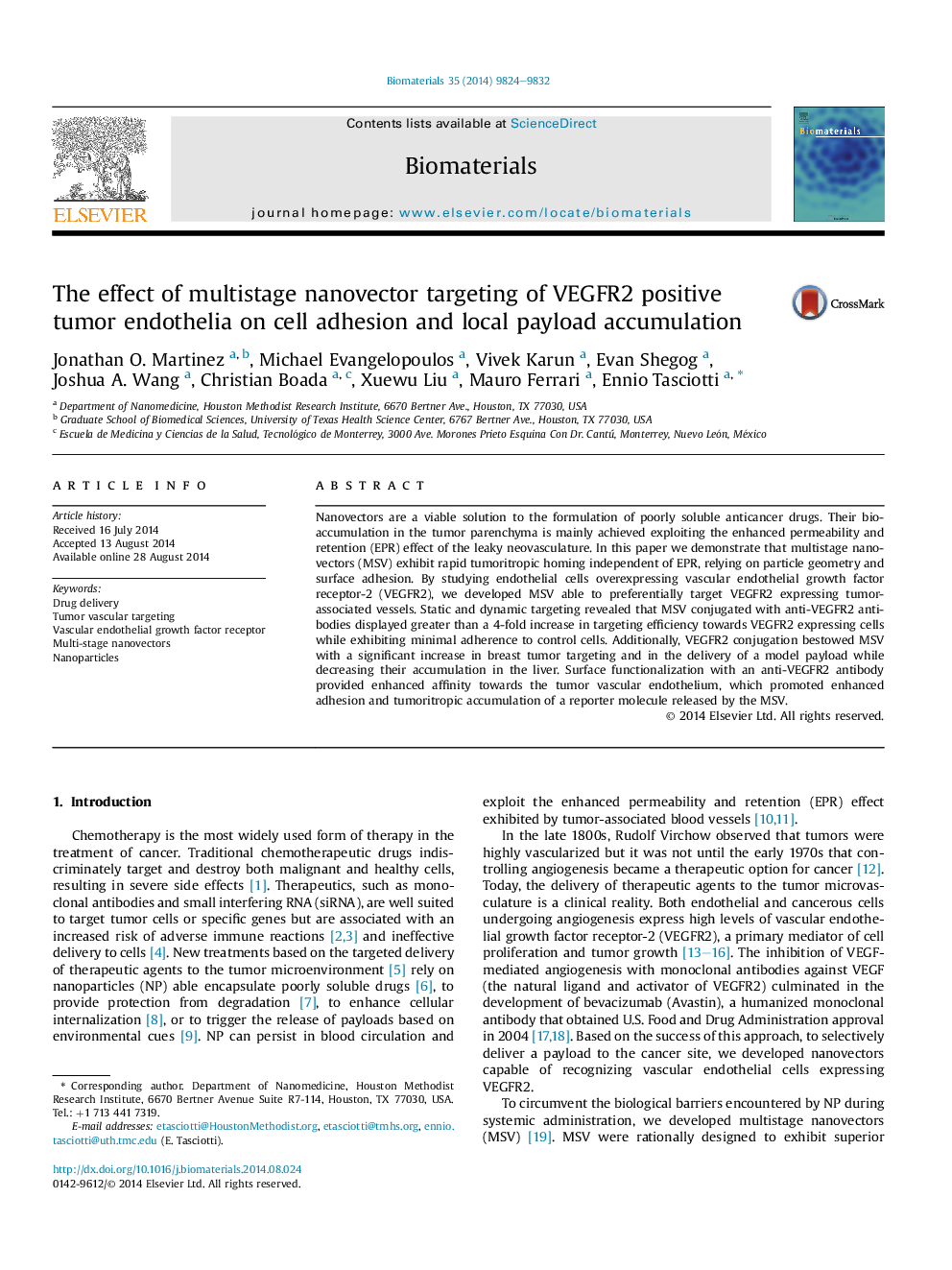| Article ID | Journal | Published Year | Pages | File Type |
|---|---|---|---|---|
| 5945 | Biomaterials | 2014 | 9 Pages |
Nanovectors are a viable solution to the formulation of poorly soluble anticancer drugs. Their bioaccumulation in the tumor parenchyma is mainly achieved exploiting the enhanced permeability and retention (EPR) effect of the leaky neovasculature. In this paper we demonstrate that multistage nanovectors (MSV) exhibit rapid tumoritropic homing independent of EPR, relying on particle geometry and surface adhesion. By studying endothelial cells overexpressing vascular endothelial growth factor receptor-2 (VEGFR2), we developed MSV able to preferentially target VEGFR2 expressing tumor-associated vessels. Static and dynamic targeting revealed that MSV conjugated with anti-VEGFR2 antibodies displayed greater than a 4-fold increase in targeting efficiency towards VEGFR2 expressing cells while exhibiting minimal adherence to control cells. Additionally, VEGFR2 conjugation bestowed MSV with a significant increase in breast tumor targeting and in the delivery of a model payload while decreasing their accumulation in the liver. Surface functionalization with an anti-VEGFR2 antibody provided enhanced affinity towards the tumor vascular endothelium, which promoted enhanced adhesion and tumoritropic accumulation of a reporter molecule released by the MSV.
